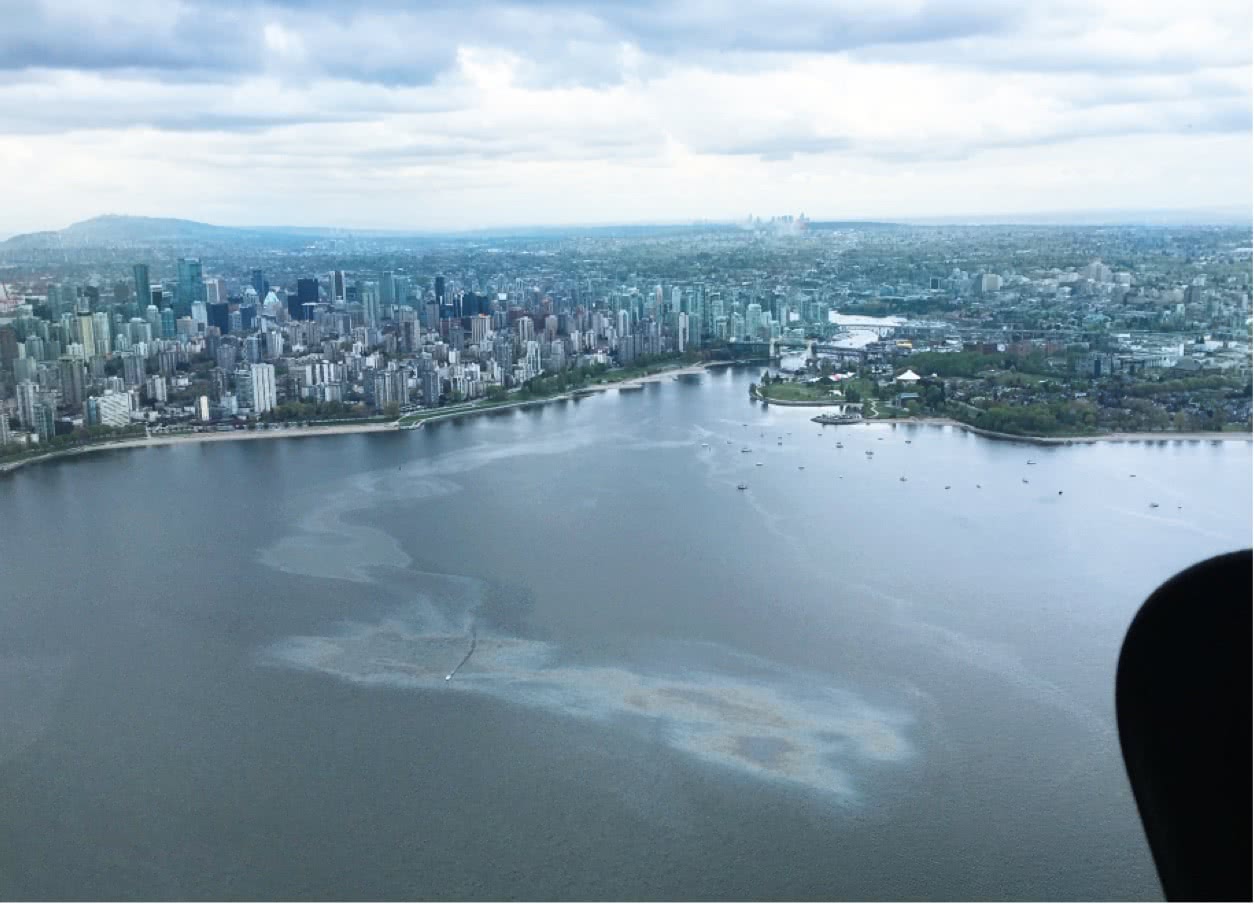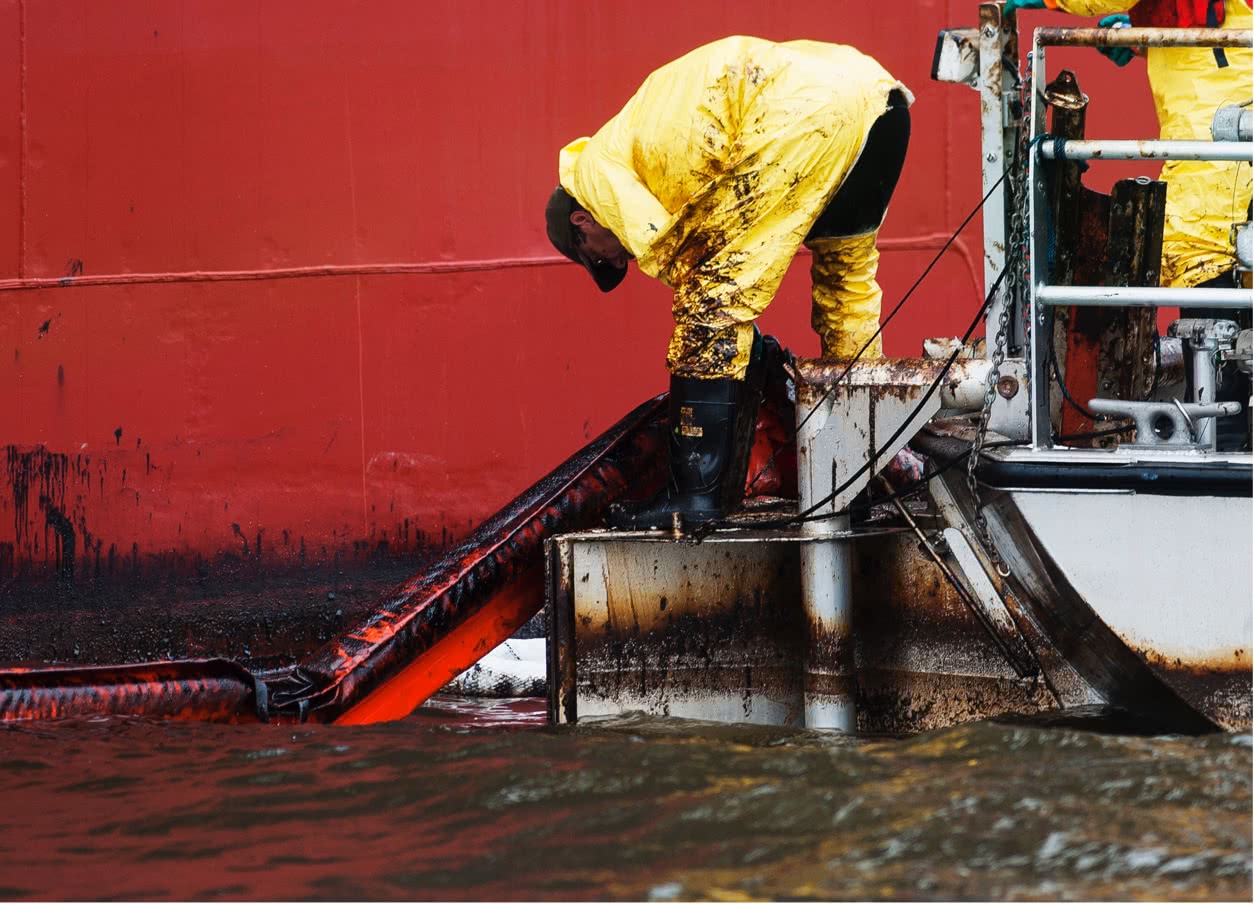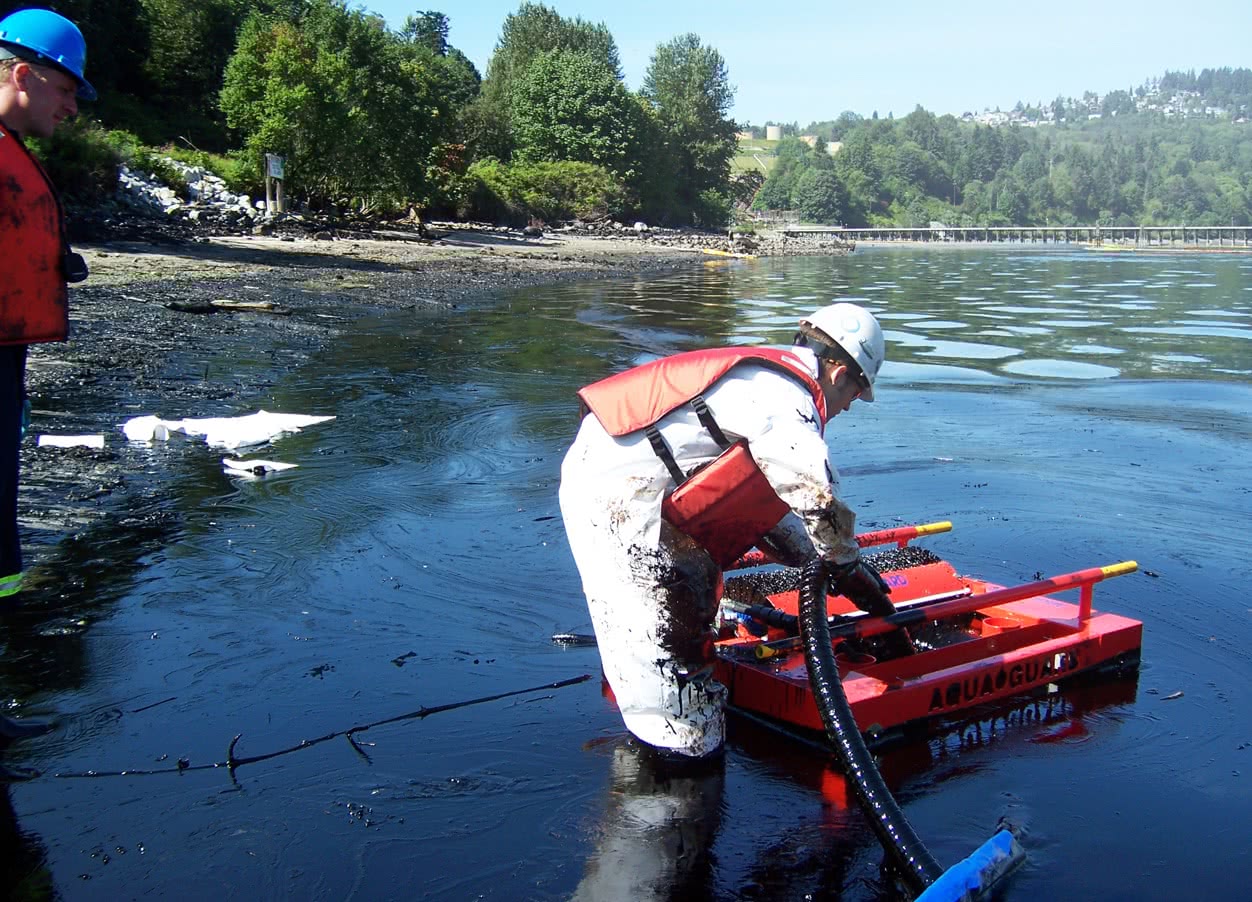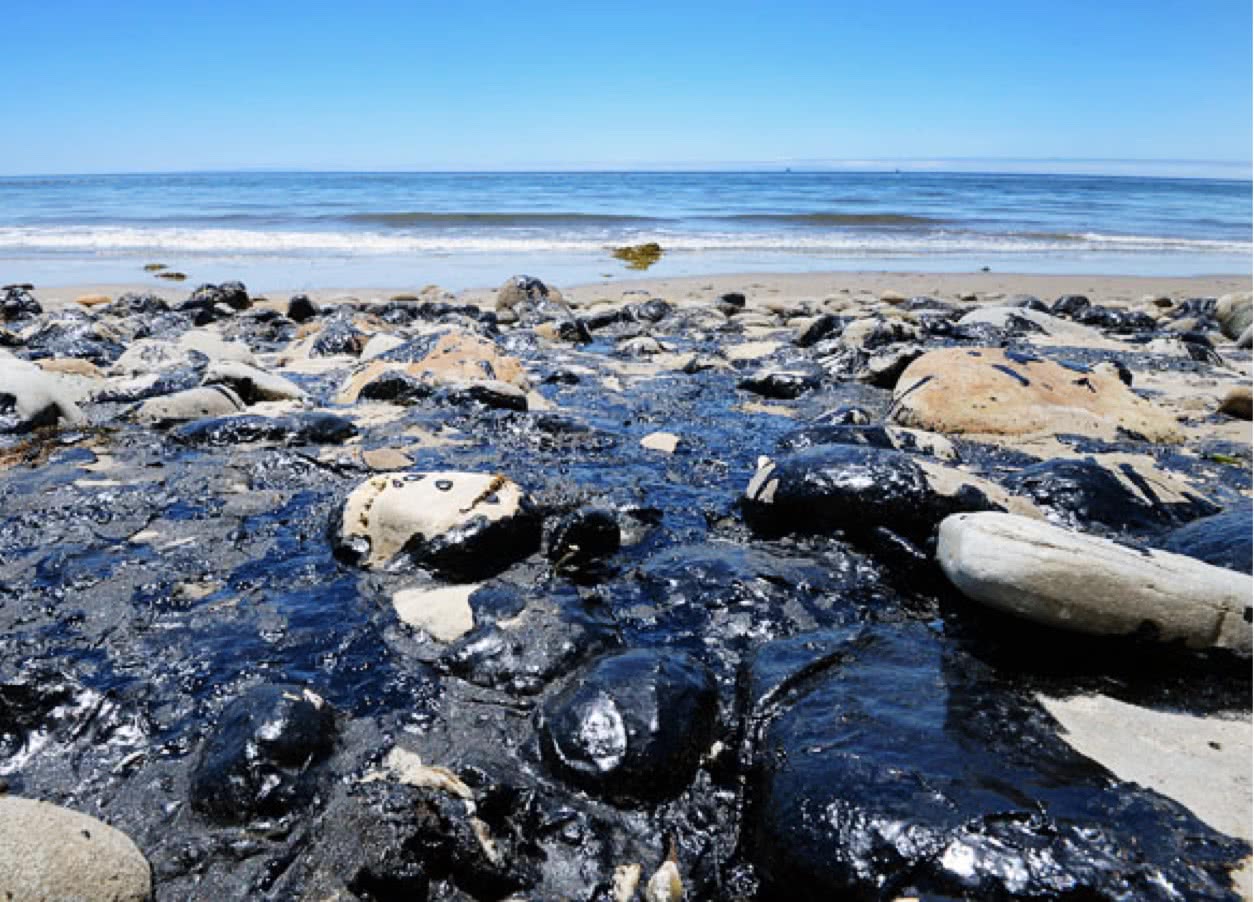Types of Oil
Overview
The vessels that transit British Columbia’s waters carry a number of different types of oil products, both as cargo and as fuel. The most common products include crude oil, diluted bitumen (dilbit), bunker C and diesel. All contain hazardous constituents and should only be handled by trained professionals. When spilled, the various types of oil affect the environment differently. While there are different types of equipment for different types of oils, the principles of response are consistent: containment, protection and recovery.
Diesel
Diesel is a light, refined petroleum product that can be used as fuel or transported as cargo. Diesel will spread quickly and is visible as rainbow sheen on the water’s surface. As a result of diesel’s high evaporation rate, sorbent pads and sorbent boom can be used to absorb light diesel sheen on the surface. However, if the product is thick enough and persists on the surface, responders can sequester the spill with rigid containment booms and deploy mechanical skimmers to effect recovery.

Bunker C
Deepsea cargo ships typically burn the heavy, residual oil left over after gasoline, diesel and other light hydrocarbons are extracted from crude oil during the refining process. This bunker fuel is graded A, B or C, with C being the thickest and most viscous. Mixed with a lighter product it becomes a cheap fuel for use in shipping. Most of the larger shipping vessels traversing B.C.’s waters use bunker C as a fuel. Bunker C is a persistent oil, it is likely to spread large distances because it does not easily evaporate. On-water operations would typically include brush skimmers, sorbent boom and sorbent pads.

Dilbit
Alberta’s oil sands contain a heavy viscous oil called bitumen. Because of its thick consistency, it must be diluted with other petroleum compounds to enable it to flow through pipelines for transport. This thinner, more fluid product is called diluted bitumen or dilbit. As with many crude oils, sorbent products and mechanical skimming devices have proven effective in removing this crude oil from the surface.

Crude
Conventional crude oil blends vary in their chemical composition, depending on where they originate. About one-third of the product will typically evaporate within 24 hours once released into sea water. The different types of crude that are transported off of B.C.’s coast include Alaskan North Slope and light crudes from western Canada. Brush skimmers, sorbent booms and sorbent pads have proven very effective in removing crude oil from the sea’s surface.

Weathering
Oil begins to weather shortly after it is spilled in sea water. Weathering refers to the variety of physical, chemical and biological processes that transform the oil in the marine environment. These processes include evaporation, emulsification, dispersion, microbial degradation and photooxidation. Weathering accounts for the wide range in recovery rates in spills. Oil types differ in how they weather.
